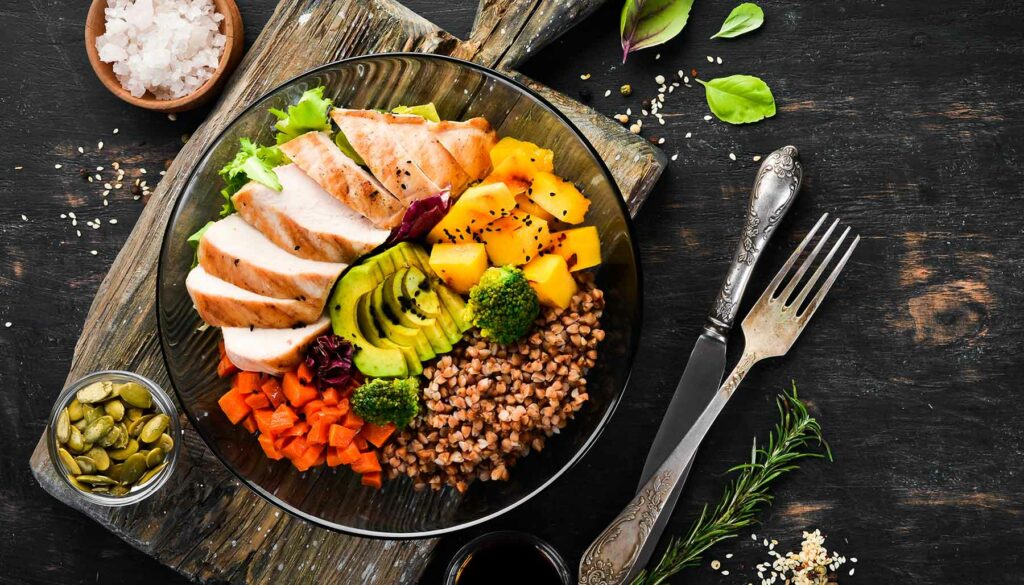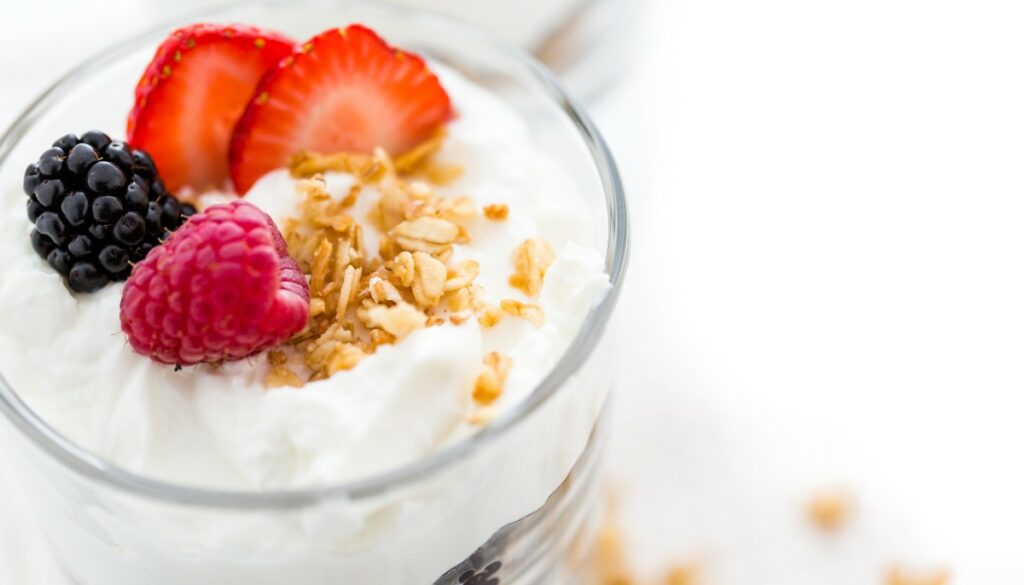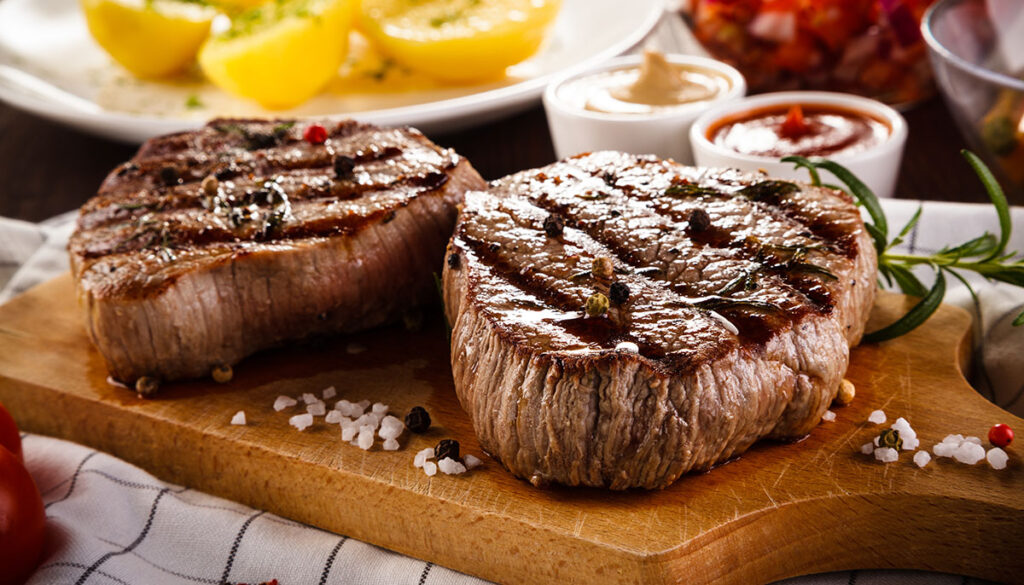Whether it’s because of dieting, wanting to gain muscle, switching to a plant-based diet, or simply eating healthier, protein seems to be the hot topic for just about everyone these days.
What exactly is this nutrient, and what does it do for us? How do you know that you’re getting enough protein, especially with the increased interest in plant-focused diets? This is where the “complete protein” comes into play.
While there are plenty of healthy protein sources, only a few of them are considered complete proteins. Let’s talk about what that means, why it matters, and how to match up “incomplete proteins” to get all the nutrients your body needs.
Why You Need Enough Protein in Your Diet
First things first, let’s talk about the importance of protein! Surely you’ve heard by now that we need this critical nutrient.
Think of proteins as the building blocks, as every cell in the human body contains protein. They are in our bones, muscles, cartilage, and skin. Hair and nails are comprised mostly of protein. Clearly, protein plays a key role in the creation and maintenance of every cell in our bodies.
Your body uses protein to build and repair, but protein is also crucial to digestion, hormone regulation, and more. It even aids red blood cells that carry oxygen throughout the body.

As you can imagine, not getting enough protein can lead to health problems. If you are not meeting protein requirements, you’ll start to lose muscle mass. Your body will start breaking down your muscle as a way to get the energy it needs.
It can lead to a weakened immune system and increase the risk of infection, too, as inadequate protein intake can impair immune function. Too little protein will also affect the health of your skin and hair, and could negatively impact your bone mineral density.
Okay, so just eat a ton of protein, right? Well, if you take in too much, your body may store the excess as fat. Plus, increasing protein can often mean eating less of other important nutrients – so be careful not to lose that healthy balance.
In order to determine your recommended daily intake, check out this online tool that calculates daily nutrient recommendations.
The Difference Between Complete Protein and Incomplete Protein
All that being said, not all protein is exactly equal! There is such a thing as complete and incomplete protein. And no, it’s not based on whether the source is meat or plant-based, either. There are also plant-based sources of complete protein.

Protein is actually made up of individual amino acids, which are like the building blocks of the nutrient. The body produces eleven of them on its own, but there are another nine amino acids that we have to consume to make up the total of twenty amino acids.
These are the nine essential amino acids that your body doesn’t produce:
- Histidine
- Isoleucine
- Leucine
- Lysine
- Methionine
- Phenylalanine
- Threonine
- Tryptophan
- Valine
The terms “complete” and “incomplete” refer to the number of amino acids present. Some foods contain all nine of those amino acids that we need to consume, while other foods only have a few of them. In order to be considered a “complete” protein, it has to contain all nine of those essential amino acids. Conversely, not having all nine makes it an “incomplete” protein.
In order to get all the benefits that protein has to offer, ideally we should be consuming all nine essential amino acids. The easiest way to do that is with foods that contain complete protein, which knock out all nine at once. To be clear, that doesn’t mean that incomplete proteins are bad or unhealthy. It just means that we need to combine different foods to fill the gaps.
Combining Incomplete Proteins
Plant-based incomplete protein sources are definitely still nutritious foods to eat, so you shouldn’t avoid them just because they don’t contain all nine essential amino acids. A balanced diet will still need other vitamins and nutrients provided by these foods. So, how do you go about combining them to ensure you’re getting everything you need?
In general, you probably don’t need to sweat it too much. Even if you don’t eat animal-based products, as long as you get a variety of plant-based protein sources throughout the day and week, you’ll end up with all nine of those essential amino acids.
Of course, dietary needs are different for everyone, and you may need to pay much closer attention to your protein intake if you are trying to bulk up for a bodybuilding contest or something.

If you’re interested in certain pair-ups that create a complete protein when paired, though, these are some of the easiest. In fact, some are such common pairs that you’ve probably been eating them all along:
- Rice and beans
- Bean soup and crackers
- Rice and peas
- Pita and hummus
- Whole-grain bread and peanut butter
- Pasta with pesto
- Pasta with peas
Essentially, the key is to pair beans/legumes with whole grains, whole grains with nuts or seeds, or beans/legumes with nuts or seeds. These food combinations that form a complete protein are called complementary proteins.
Complete Protein Sources
Okay, but what about complete protein sources? What can you eat that contains all nine of those essential amino acids?
If you eat meat, eggs, and dairy products, it’s pretty easy to get complete proteins. Pretty much, if a protein comes from an animal source, you can be sure it has all nine amino acids. The amount may vary, but it’s in there.
Here are some common sources of complete protein:
- Beef
- Pork
- Poultry
- Fish
- Eggs
- Dairy – which includes cheese, milk, yogurt, and more

Pretty straightforward, right? To put it in perspective, you are likely getting most of your daily protein in a single meal, or close to it. A 6-oz piece of steak, aka the size you’re likely to eat, could have around 40 to 45 grams of protein. A real serving size is actually 3 oz, but that’s a conversation for another day.
While the exact amount of protein depends on the person, it is recommended that the average person consume about 50 to 60 grams of protein per day.
Related: Healthy Protein-Packed Breakfast Ideas for When You’re Tired of Eggs
Plant-Based Complete Proteins Exist, Too!
Believe it or not, you do not have to eat animal products to find complete proteins. It’s a misconception that you can only get complete protein from animal-based sources. You just have to know where to look!

Check out these plant-based complete protein sources:
- Soy – which includes tofu, tempeh, soy milk, soybean sprouts, textured vegetable protein (TVP), and edamame/soybeans
- Quinoa
- Chia
- Hemp seed
- Amaranth
- Seitan
- Buckwheat
- Spirulina
- Nutritional yeast
What Happens When You Consume Too Much Protein
As I mentioned before, adults only need an average of 50 to 60 grams of protein per day. It’s actually .8 grams of protein per kilogram (2.2 pounds) of body weight. For some, increasing their daily protein intake might be beneficial for preserving or building muscle mass and strength – but unless you’re an athlete or bodybuilder, this probably doesn’t apply to you.
For whatever reason, Americans are protein obsessed, and on average are consuming twice as much protein as they actually need. It probably doesn’t help that high-protein diets, like Atkins or the Ketogenic diet, are really popular right now.

So, what really happens when you consume too much protein? In the short term, you won’t suffer ill effects from excess protein alone. In the long term, however, consuming too much protein can have adverse health effects for a variety of reasons.
For starters, excess protein can lead to weight gain. This seems wild, considering how many high-protein diets promise weight loss, but it’s true. Just like with everything else, too much protein means a surplus of calories. Excess protein will get stored as fat, and the surplus of amino acids will be excreted. What a waste, in my opinion.
Too much protein can sometimes lead to less of everything else, too. It throws everything off balance. If you are getting a large percentage of calories from protein, you are likely getting less of other important nutrients.
Consuming too much protein can also cause more serious health issues, especially when you’re getting all that excess protein from certain animal sources. Overloading on protein often means eating lots of meat and dairy products that are also high in saturated fats and low in fiber. This can increase “bad” LDL cholesterol, trigger inflammation in the body, and increase the risk of heart disease. People that eat high-protein diets have a higher risk of kidney stones, too. And heavy red meat consumption in particular is linked to colon cancer, which is pretty alarming.
Healthier Sources of Protein

The leaner the protein source, the better. Here are some of your healthier options for protein:
- Seafood
- White meat poultry without the skin
- Tofu and other soy products
- Lean beef
- Eggs
- Dairy, like Greek yogurt, cheese, and milk. Just skip added sugar, processed cheese, and artificial flavors!
- Beans and legumes
- Nuts and seeds
- Whole grains
Now, I’m not telling you that you can’t enjoy a big hamburger every now and then. However, it’s always best to be mindful of what you’re putting into your body. So pay attention to more than just the protein on the nutrition label. And bon appetit!













